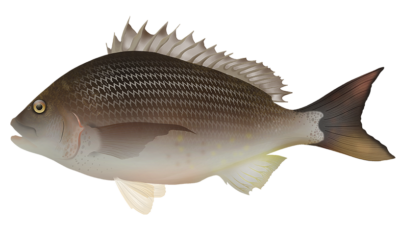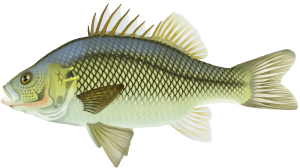Discover
Fishing Lake Environments
Fishing Australian Lakes
Fishing in Australian lakes can be a fun and rewarding experience for anglers of all levels. Lakes, whether natural or man-made, offer tranquil and often sheltered waters teeming with a diversity of fish species that feed on insects, crustaceans, and smaller fish found in both fresh and saltwater habitats.
One of the key advantages of lake fishing is the typically calm water conditions, offering a serene environment for fishing. Lakes also provide access to a wide range of depths and structures, such as submerged trees and weed beds, which are often attractive to fish. Furthermore, lakes can be rich in food sources, drawing in various predatory fish species.
When fishing in lakes, it’s important to research the specific lake you plan to fish in, as different species may thrive in different environments. Some popular fish species found in Australian lakes include trout, bass, perch, and Murray cod. It’s also important to consider the time of year, as certain species may be more active or easier to catch during specific seasons. Whether you’re an experienced angler or just starting out, fishing in lakes is a fun and relaxing time for individuals or families.
Quick Facts
- Australia’s freshwater ecosystems are unique, with up to 90% of their fish species found nowhere else in the world. This includes well-known fishing targets like the Murray cod, golden perch, and Australian bass.
- Australia is home to several unique saltwater lake systems, one of the most famous being Lake Macquarie in New South Wales. It’s the largest coastal saltwater lake in the Southern Hemisphere, covering an area of 110 square kilometres.
- The world record for the largest Murray cod ever caught was 51 kgs (113 lbs) and 1.8m.
Common fish caught in lakes
Barramundi are known for their strength and fighting ability, making them a prized catch. These fish can be found in many lakes throughout Australia, particularly in the northern parts of the country where the climate is warmer.
Redfin, introduced to Australia in the 1860s as a sportfish, are a predatory species, feeding on small fish, insects and crustaceans. They can be found in most freshwater systems, including lakes, dams and rivers.

Where and how to fish lakes
When fishing lakes like any other body of water, you need to understand where fish like to congregate. With lake fishing, whether it be fresh or salt water, traverse the shoreline, particularly around structures like logs, rocks, or vegetation, as these areas often serve as natural habitats for smaller fish, which in turn attract the bigger fish. Also, the edges of weed beds are usually bustling with activity and can be a great spot to cast your line.
The mouth of a creek or a place where water flows into the lake is another potential hotspot, as the incoming water brings in food and oxygen, attracting a variety of fish species. Similarly, deeper sections of the lake or areas with noticeable changes in depth, also known as drop-offs, can be fruitful as they offer cooler temperatures and shelter for fish during the warmer parts of the day.
Be patient, observant, change up baits or lures and be ready to move to a new location if you’re not having any luck.
The best bait and tackle for fishing lakes
Choosing the correct bait and tackle is vital for successful lake fishing in Australia. The bait and lures you use can vary depending on the fish species you’re aiming for. Live bait is often a reliable choice, as it naturally attracts fish. Popular live bait options include yabbies, worms, grubs, and freshwater shrimp. Ensure your live bait is fresh and active to lure more fish.
Artificial lures are also effective for lake fishing. Soft plastics like worm imitations, paddle-tails, or creature baits can be used to target a wide variety of species. Experiment with various colours, sizes, and retrieval methods to mimic wounded or escaping prey. Spinnerbaits and crankbaits can also be successful, especially when targeting predatory species like Murray cod, trout, golden perch, or Australian bass. The same goes for saltwater species like bream, flathead and tailor.
As for tackle, a medium-action spinning rod and reel setup is recommended. A 6-7 ft (1.8-2.1 m) rod is suitable for casting lures and can handle the size of most fish found in Australian lakes. Combine this with a 2000-3000 size spinning reel equipped with a reliable drag system. A braided line in the 6-12 lb (2.7-5.4 kg) range offers sensitivity and casting distance, while a 10-20 lb (4.5-9 kg) fluorocarbon leader provides abrasion resistance and invisibility underwater.
Using the right bait and tackle will greatly improve your chances of a successful days fishing at the lake.
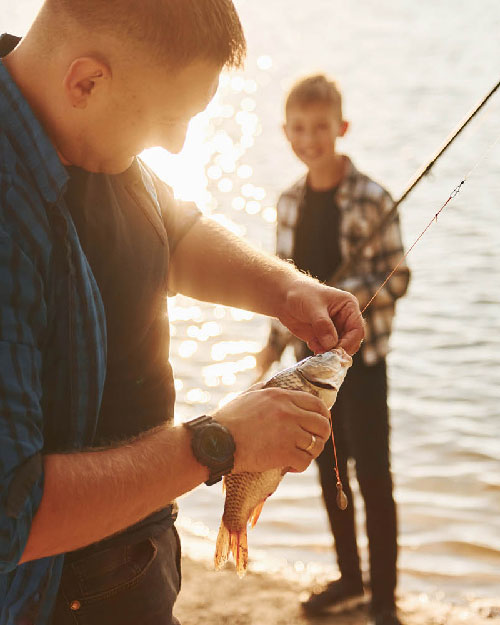
Top Target Species
These fish are known for their aggressive strikes and fighting abilities, making them a popular target for freshwater anglers in Australia.
Australian Bass are most commonly found in freshwater lakes and rivers along the east coast of Australia, and they are a highly sought-after sportfish. They can be found in both deep and shallow water, and tend to move around a lot depending on the time of year and water conditions.

The best time and season to fish lakes
The optimal time and season to fish in Australian lakes can depend on various factors, including the specific location and the fish species you’re targeting. However, certain general guidelines can enhance your fishing experience.
Time of Day:
Early mornings and late afternoons are often the best times to fish in lakes, as many fish species are most active during these periods. With lower light conditions, fish tend to come closer to the shore to feed, making them more accessible to anglers.
Water Conditions:
Water conditions, such as temperature and flow, significantly impact fishing in lakes. After rain, inflowing streams and creeks can stir up food, attracting fish. Similarly, areas with temperature variations, like where warm shallow waters meet cooler depths, often see increased fish activity.
Seasons:
Different fish species have peak seasons in Australian lakes. Here are some general guidelines:
Trout: Autumn and spring (March to May and September to November) are the prime times for trout, as they are more active in cooler water temperatures.
Murray Cod: This species is more active during warmer months, with peak activity from December to March.
Golden Perch: These fish are more prevalent during spring (September to November), often coinciding with their spawning period.
Redfin (European Perch): Redfin are most active during the warmer months, particularly from December to March, when they often school in large numbers.
Australian Bass: These fish are more prevalent during the warmer months (December to March), when they migrate upstream to breed.
It’s important to research the specific location and fish species you’re targeting, as the best times and seasons can vary across different regions in Australia. Understanding the local conditions and fish patterns will significantly improve your chances of a successful lake fishing session.
Lake fishing safety and regulations
Fishing in lakes can be an exciting and fun day out, but it’s essential to remeber safety and adhere to local regulations. Here are some key points to consider when fishing in lakes:
Safety:
Lake fishing can present its own set of hazards. Staying alert and aware of your surroundings is crucial. Below is information to help ensure your safety.
Footwear: Wear sturdy footwear with good grip, as lake banks can be slippery.
Weather conditions: Check the local weather forecast before heading out. Avoid fishing during severe weather, as conditions can quickly become unsafe.
Lifejacket: While not always required, wearing a lifejacket or personal flotation device (PFD) can be a good safety measure, especially when fishing from a boat.
Buddy system: Fish with a friend or family member to ensure someone can provide assistance in case of an emergency.
Stay aware: Be aware of your surroundings, including local wildlife (snakes), and be respectful of others enjoying the lake.
Regulations:
Fishing regulations in Australia vary by state and territory, so it’s important to consult local government websites for the most up-to-date information. Some general regulations to be aware of include:
Fishing licenses: Most states and territories in Australia require recreational fishers to hold a valid fishing license. Make sure you have the appropriate license for the area you’re fishing in.
Size and bag limits: There are size and bag limits for various fish species to promote sustainable fishing practices. Familiarise yourself with these limits for the species you’re targeting.
Closed seasons: Some fish species have closed seasons to protect them during their breeding periods. Make sure you’re aware of any closed seasons for the species you’re targeting.
Gear restrictions: There may be restrictions on the type of gear you can use in certain areas or for specific species. Check local regulations to ensure your fishing gear is compliant.
For up-to-date information on lake fishing safety and regulations in Australia, visit the relevant state or territory government websites.

Tips and Tricks for Fishing Lakes
Lake fishing can be tough if you don't know the area - Consider using berley.
While it’s more common in saltwater fishing, berley (chum) can also be effective in lakes. Scatter some berley around your fishing spot to attract fish. This can be as simple as bread crumbs to get some activity going with smaller species of fish which then draws in the larger fish.
What bait should I use when fishing lakes?
The type of bait you should use can depend on the species you are targeting, but commonly used baits in Australian lakes include worms, shrimp, crickets, and minnows. There are also some artificial baits with scent added to them, like powerbait.
How should I choose a spot to fish in a lake?
Look for areas where fish are likely to congregate, such as near weed beds, drop-offs, or underwater structures. You can also look for areas with a lot of bird activity, as birds can indicate the presence of baitfish.
What kind of fishing technique works best in lakes
Different fishing techniques can be effective in Australian lakes, depending on the species you are targeting. Some popular techniques include using lures or bait under a bobber, casting and retrieving lures, and trolling.
Here is a list of popular lakes to fish across each state and territory.
Australia is full of both fresh and saltwater lakes. These body of waters have a variety of different fish to chase from bass, barramundi, perch, salmon, trout and many other species. Below is a list of popular lakes to fish across the country.
Lake fishing in New South Wales (NSW)
Lake Macquarie – Saltwater: Located in the Hunter Region, it’s known for flathead, bream, tailor, and whiting.
Lake Illawarra – Saltwater: Located south of Wollongong, it’s a good spot for flathead, bream, and whiting.
Narrabeen Lake – Saltwater: Located in Northern Sydney, it’s popular for bream, flathead, and tailor.
Tuggerah Lake – Saltwater: Located on the Central Coast, it’s a good location for bream, flathead, and whiting.
Wallis Lake – Saltwater: Located in the Great Lakes district, it’s known for flathead, bream, whiting, and oysters.
Lake Jindabyne – Freshwater: Located in the Snowy Mountains, it’s known for trout, Atlantic salmon, and brook trout.
Lake Eucumbene – Freshwater: Also located in the Snowy Mountains, it’s popular for rainbow trout, brown trout, and Atlantic salmon.
Lake Burrinjuck – Freshwater: Located near Yass, it’s known for Murray cod, yellowbelly, and silver perch.
Lake Hume – Freshwater: Located near Albury, it’s popular for Murray cod, golden perch, and trout.
Lake Windamere – Freshwater: Located near Mudgee, it’s known for golden perch and Murray cod.
Copeton Dam – Freshwater: Located near Inverell, it’s popular for Murray cod, yellowbelly, and silver perch.
Blowering Dam – Freshwater: Located near Tumut, it’s known for brown trout, rainbow trout, and redfin perch.
Lake fishing in Victoria (VIC)
Lake Wellington – Saltwater: It’s a part of the Gippsland Lakes system and popular for bream, luderick, and mullet.
Lake Victoria – Saltwater: Also part of the Gippsland Lakes system, you can catch bream, flathead, and tailor here.
Lake King – Saltwater: It’s another lake in the Gippsland Lakes system, and it’s known for flathead, bream, and whiting.
Lake Tyers – Saltwater: Located in East Gippsland, it’s popular for flathead, bream, and luderick.
Lake Eildon – Freshwater: Located in the state’s north-east, it’s known for Murray cod, golden perch, and brown trout.
Lake Wendouree – Freshwater: Located in Ballarat, it’s popular for trout and redfin.
Lake Bullen Merri – Freshwater: Located near Camperdown, it’s known for chinook salmon, brown trout, and rainbow trout.
Lake Purrumbete – Freshwater: Located near Camperdown, it’s popular for brown trout, rainbow trout, and chinook salmon.
Lake Hume – Freshwater: Located near Wodonga, it’s known for Murray cod, golden perch, and brown trout.
Lake Eppalock – Freshwater: Located near Bendigo, it’s popular for golden perch, Murray cod, and redfin.
Rocklands Reservoir – Freshwater: Located in the Grampians, it’s known for redfin, brown trout, and golden perch.
Lake Fyans – Freshwater: Also located in the Grampians, it’s popular for brown trout, rainbow trout, and redfin.
Lake fishing in Queensland (QLD)
Broadwater – Saltwater: Located on the Gold Coast, this large coastal saltwater lake is popular for bream, flathead, and whiting.
Hinchinbrook Channel – Saltwater: Technically a channel but behaves much like a lake, it’s popular for barramundi, mangrove jack, and grunter.
Lake Cooroibah – Saltwater: A shallow lake on Noosa River, this lake is brackish and a good spot for fishing.
Lake Awoonga – Freshwater: Located near Gladstone, it’s popular for barramundi, saratoga, and mangrove jack.
Lake Tinaroo – Freshwater: Located on the Atherton Tablelands, it’s known for barramundi, sooty grunter, and sleepy cod.
Lake Moogerah – Freshwater: Located in the Scenic Rim region, it’s popular for Australian bass, golden perch, and silver perch.
Lake Somerset – Freshwater: Located near Kilcoy, it’s known for Australian bass, golden perch, and saratoga.
Lake Monduran – Freshwater: Located near Gin Gin, it’s popular for barramundi.
Lake Maraboon (Fairbairn Dam) – Freshwater: Located near Emerald, it’s known for golden perch, barramundi, and saratoga.
Lake Wivenhoe – Freshwater: Located near Fernvale, it’s popular for Australian bass, silver perch, and catfish.
Lake Broadwater – Freshwater: Located near Dalby, it’s known for golden perch, Murray cod, and silver perch.
Lake Proserpine (Peter Faust Dam) – Freshwater: Located near Proserpine, it’s popular for barramundi.
Lakefield National Park Lagoons – Freshwater: These remote lagoons are known for barramundi, saratoga, and sooty grunter.
Lake fishing in South Australia (SA)
The Coorong – Saltwater: A lagoon ecosystem adjacent to Lake Alexandrina and Lake Albert, it’s known for mulloway, bream, and mullet.
Lake Eyre – Saltwater: Although it’s often dry, during rare flooding events, it can be a place to fish for golden perch and bream. However, fishing is often restricted during these times to protect the ecosystem.
Lake Frome – Saltwater: Similar to Lake Eyre, it’s often dry but can host fish during flooding. Fishing here may be restricted.
West Lakes – Saltwater: A coastal lagoon in Adelaide, it’s popular for bream, mullet, and flathead.
Lake Gairdner – Saltwater: Mostly a dry salt lake, during floods it may host fish. Fishing is often restricted during these times.
Lake Torrens – Saltwater: Similar to Lake Eyre and Lake Frome, it’s often dry but can host fish during flooding. Fishing is often restricted.
Blue Lake – Freshwater: Located in Mount Gambier, it’s stocked with trout but fishing is only permitted during certain seasons.
Lake Bonney – Freshwater: Located in the Riverland, it’s known for golden perch, Murray cod, and silver perch.
Lake Alexandrina – Freshwater/brackish: Located near the mouth of the Murray River, it’s known for bream, perch, and mulloway.
Lake Albert – Freshwater: Adjacent to Lake Alexandrina, it’s popular for bream, perch, and catfish.
Lake fishing in Tasmania (TAS)
Pitt Water – Saltwater: Located near Sorell on the eastern coast of Tasmania, it is a large saltwater lagoon that offers fishing opportunities for species such as bream, flathead, and whiting.
Moulting Lagoon – Saltwater: A large lagoon on the east coast, it’s popular for bream, flathead, and luderick.
Great Lake – Freshwater: Located in the Central Highlands, it’s known for trout fishing, including brown trout and rainbow trout.
Lake Pedder – Freshwater: Situated in the southwest, it offers fishing opportunities for trout, including brown trout and rainbow trout.
Lake Burbury – Freshwater: Located in the west, it’s popular for trout fishing, including brown trout and rainbow trout.
Lake Crescent – Freshwater: Situated in the west, it’s known for trout fishing, including brown trout and rainbow trout.
Lake Leake – Freshwater: Located in the east, it offers fishing for trout, including brown trout and rainbow trout.
Arthurs Lake – Freshwater: Situated in the Central Highlands, it’s popular for trout fishing, including brown trout and rainbow trout.
Woods Lake – Freshwater: Located in the Central Highlands, it’s known for trout fishing, including brown trout and rainbow trout.
Lake Ada – Freshwater: Situated in the Southwest National Park, it offers fishing for trout, including brown trout and rainbow trout.
Lake fishing in Western Australia (WA)
Lake Walyungup – Saltwater: Located near Rockingham, it’s a shallow saltwater lake known for fishing species such as bream, herring, and flathead.
Lake McLarty – Saltwater: Situated near Mandurah, it’s a coastal saltwater lake popular for fishing for bream, whiting, and tailor.
Lake Preston – Saltwater: Located near Bunbury, it offers fishing opportunities for species like herring, whiting, and flathead.
Peel Inlet – Saltwater: This large estuarine system near Mandurah is known for fishing species such as black bream, flathead, and flounder.
Lake Clifton – Saltwater: Situated near Mandurah, it’s a saline lake that offers fishing for species like yellowfin whiting, herring, and flounder.
Lake Kununurra – Freshwater: Located in the Kimberley region, it offers fishing opportunities for barramundi, saratoga, and catfish.
Lake Argyle – Freshwater: Situated in the East Kimberley, it’s known for barramundi, saratoga, and freshwater bream.
Lake Jasper – Freshwater: Located in the D’Entrecasteaux National Park, it offers fishing for black bream, trout, and freshwater mussels.
Lake Navarino – Freshwater: Situated near Waroona, it’s known for freshwater fishing including trout, perch, and redfin.
Lake and Lagoon fishing in Northern Territory (NT)
Lake Alexander – Saltwater: Located near Darwin, it is a man-made lake connected to the sea. It offers fishing opportunities for species such as barramundi, mangrove jack, and threadfin salmon.
Leanyer Recreation Park Lake – Saltwater: Also situated near Darwin, it’s a man-made lake connected to the sea. It offers fishing for species such as barramundi, mangrove jack, and threadfin salmon.
Darwin Harbour – Saltwater: The expansive harbor offers fishing for species such as barramundi, queenfish, and threadfin salmon.
Bynoe Harbour – Saltwater: Situated near Darwin, it’s known for barramundi, mangrove jack, and threadfin salmon.
Fog Bay – Saltwater: Located east of Darwin, it offers fishing opportunities for barramundi, threadfin salmon, and golden snapper.
Corroboree Billabong – Freshwater: Located in the Mary River Wetlands, it’s known for barramundi, saratoga, and catfish.
Shady Camp Billabong – Freshwater: Situated in the Mary River region, it offers fishing opportunities for barramundi, saratoga, and catfish.
Arafura Swamp – Freshwater: Located in the Garig Gunak Barlu National Park, it’s known for barramundi, saratoga, and catfish.
Katherine Gorge (Nitmiluk National Park) – Freshwater: Located in the Nitmiluk National Park near Katherine, it offers fishing opportunities for species such as barramundi, saratoga, and catfish.
Lake Bennett – Freshwater: Situated south of Darwin, it’s known for fishing species like barramundi, saratoga, and sleepy cod.
Lake Woods – Freshwater: Located in the Daly River region, it offers fishing opportunities for barramundi, saratoga, and catfish.
Lake Mary Ann – Freshwater: Situated in the town of Tennant Creek, it’s known for fishing species like barramundi, saratoga, and catfish.
Lake fishing in the Australian Capital Territory (ACT)
Googong Reservoir: Located just south of the ACT border in New South Wales, it’s a popular fishing spot for golden perch, Murray cod, and redfin.
Cotter Dam: This reservoir on the Cotter River offers opportunities to catch trout, including brown trout and rainbow trout.
Bendora Dam: Situated in the Brindabella Ranges, it provides fishing opportunities for brown trout and rainbow trout.
Corin Dam: Located in Namadgi National Park, it’s known for its trout fishing, including brown trout and rainbow trout.
Burley Griffin Lake: While primarily a recreational lake in the heart of Canberra, it offers fishing opportunities for species such as carp, redfin, and golden perch.
Gungahlin Pond: Located in Gungahlin, this small pond offers fishing opportunities for species such as carp, redfin, and golden perch.
Lake Tuggeranong: Situated in the southern part of Canberra, it’s another recreational lake where you can fish for species such as carp, redfin, and golden perch.
Search the Australian
Fish & Marine Life Database
Australian Fish & Marine Species Identification – Freshwater & Saltwater Fish, Sharks, Rays and Invertebrates of Australia.
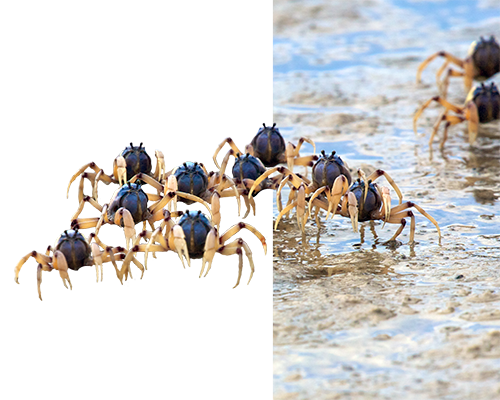
Explore Other Environments
Australia offers an incredible variety of fishing habitats, including coral reefs, rugged coastlines, pristine estuaries, sandy beaches, meandering rivers, and freshwater lakes, providing anglers with abundant opportunities for fishing – Learn more below.
Mangrove
Sandflat
Beach
Reef
Breakwall
Ocean rocks
River
Estuary
Discover More
Dive into our resource library to learn fun facts and get information on everything about lake fishing and more. All your Australian marine life and lifestyle resource in one place!
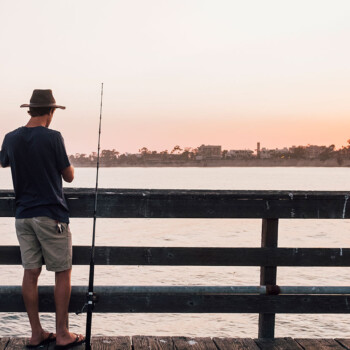
Bait Jig Rig & Variations
Bait jig rigs represent a crucial piece of tackle for the angling world, blending the art of lure design with the...

Running Sinker Rig & Variations
The running sinker rig, also known as the ball sinker rig, is an extremely popular and easy to create rig. There...
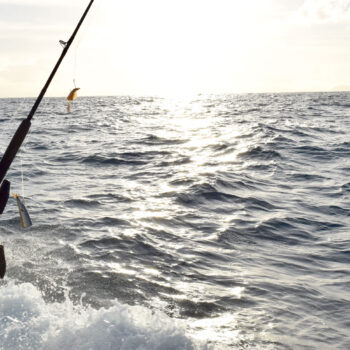
Paternoster Rig & Variations
The paternoster rig and its variations are a popular and easy rig to create. It can be created with single or...

Tips for hiring a boat
Hiring a boat is an excellent way to explore the beautiful waterways of Australia. Whether you want to go fishing,...

Top boating activities
Australia is surrounded by water, with a vast coastline and numerous lakes, rivers, and waterways, making it a...
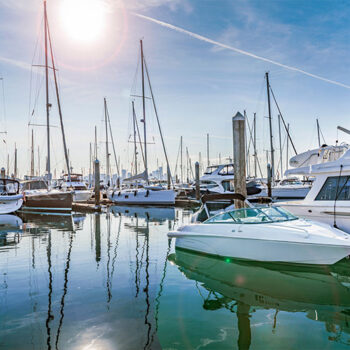
What type of boat is best for me?
Australia is a nation surrounded by water, making boating a popular recreational activity for many Australians....

An introduction to game fishing
Game fishing is a popular recreational activity in Australia. Known for its vast coastline and abundant marine...
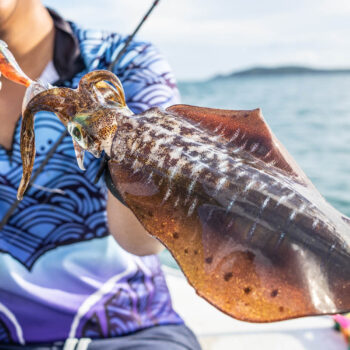
How to catch squid
Catching squid is a popular pastime in many coastal communities around the world. Whether you're an experienced...






